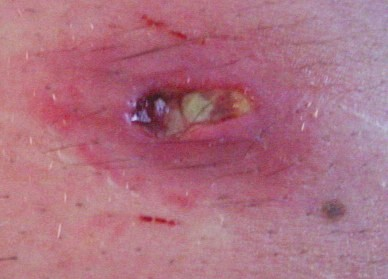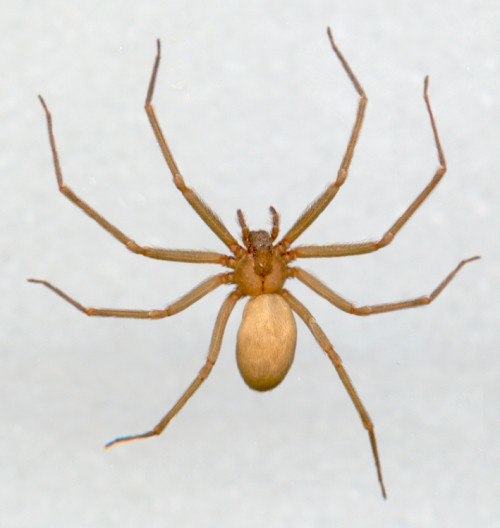Brown Recluse or Fiddleback Spider
 Scientific Name
Scientific Name
Loxosceles reclusa
Habitat
Recluse spiders avoid areas where there is human activity, and prefer closets, guest rooms, basements, and attics. Outside, they like piles of rocks and leaves. They frequently inhabit shoe boxes, clothing and furniture. These spiders are most active at night and feed on silverfish, crickets, and other insects. Most people are bitten on the hands or feet when they are handling infested items.
Life Cycle
After mating, which may occur from February to October within its natural range, 40 to 50 eggs are deposited in off-white, round, 1/4 inch diameter silken cases. These are usually found in dark sheltered places on the spider's habitat. The summer months of May through August are optimal times for egg laying. From one to five egg sacs will be produced in a lifetime which normally averages from one to two years; however four to five years is not uncommon. After the eggs hatch, the young spiderlings undergo at least one molt (shedding of skin) within the egg sac. Subsequently, second instar spiderlings will emerge from the egg sac and undergo six to seven molts during the next seven to 12 months before reaching the adult stage. The presence of shed skins (exuviae) and subsequent attachment in and around residences may be indicative of infestations and enable accurate identification. Careful inspection of attics (including exposed rafters and ceiling joists), basements, closets, boxes and other household goods should reveal old and active infestation sites.
Description
The brown recluse spider is nicknamed the fiddleback or violin spider because of the distinctive dark violin-shaped marking on top of the cephlothoraxfront body section. Notice the neck of the violin points toward the rear. The brown recluse is unusual in having six eyes instead of the usual eight. The spiders are tan to dark brown and nearly 1/4 (dime) to 1/2 inch (quarter) in body size. The immature spiderlings resemble adults in structure but have somewhat lighter coloration.
Bite


Control
Please contact your local county extension office for current information.

